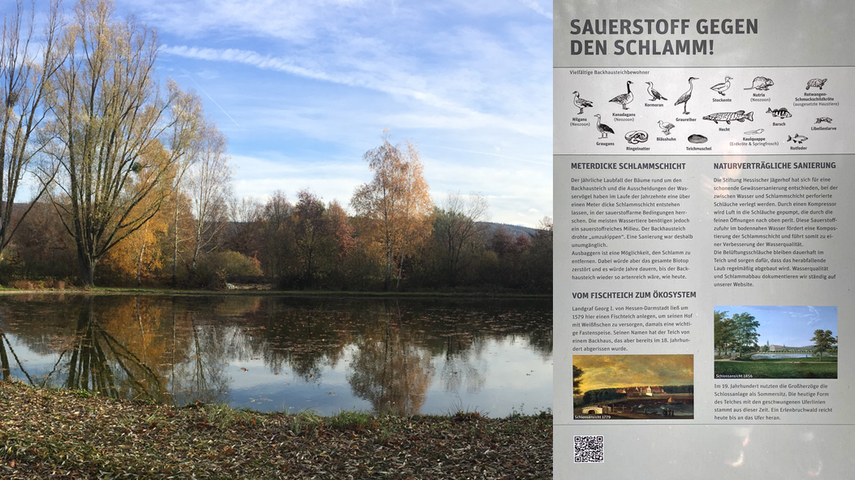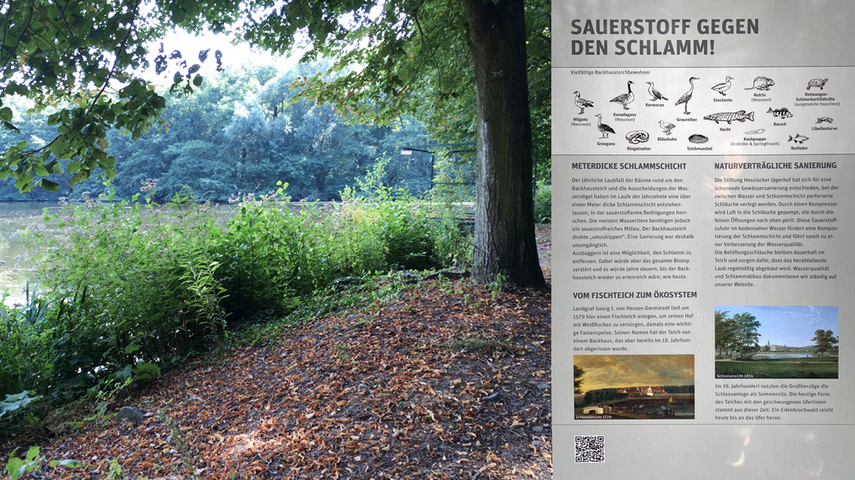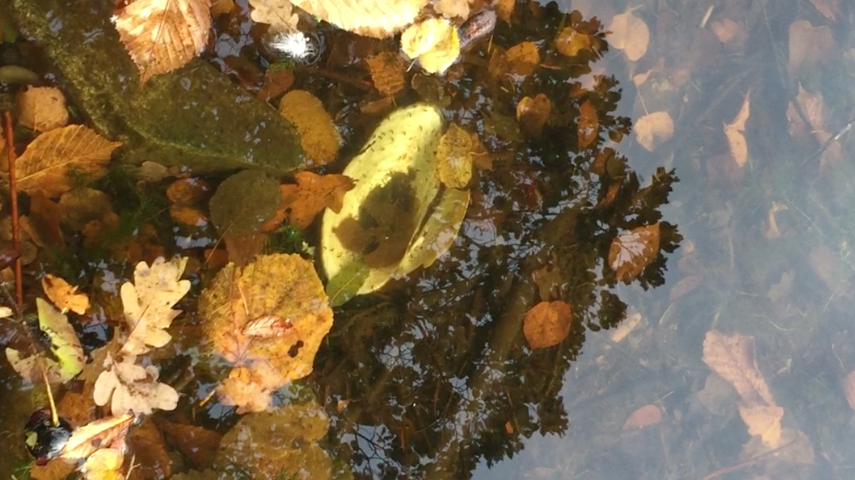Desludging
Biodegradation of the organics
Permanent watercourse maintenance
Renovation and maintenance using the linear Drausy® system.Darmstadt: Heavily silted natural lakes or artificial water bodies can regain their natural balance - under their own steam: the biology only needs the aerobic environment. The Drausy® system is spread and installed via the waterway.
back to overviewDesludging with the Drausy® system
Example of the Backhaus Pond - cleared of silt- Volume reduction - through decomposition of the organic matter and compression of the sediment
- Clear view - more depth of view, as suspended algae are avoided due to nutrient removal
- Oxygen enrichment - through an extensive aerobic environment at the bottom
Biological desludging - how does it work?
Organic degradation through micro-invasive basic aeration:
Drausy® principle








